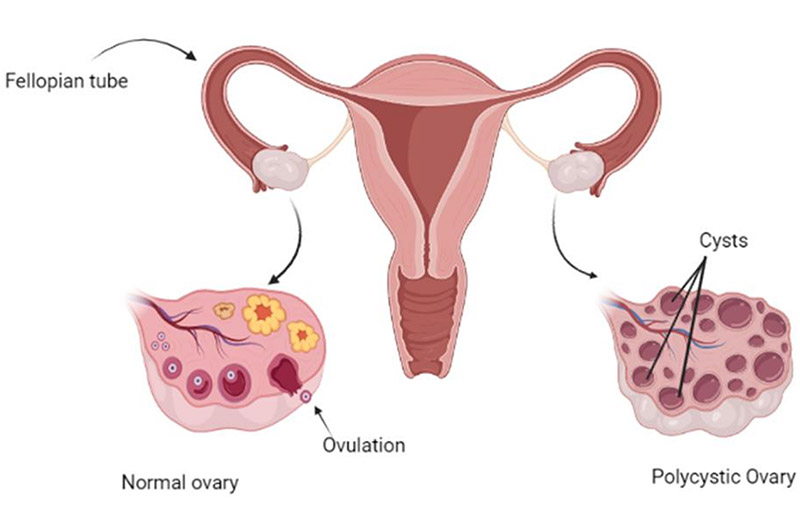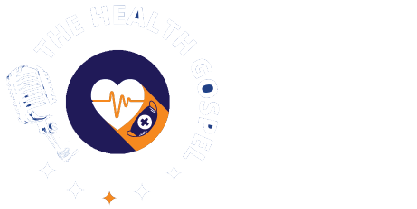
Polycystic Ovarian Syndrome (PCOS)
Polycystic ovarian syndrome is a disease that affects females and symptoms often start to show in adolescence.
Most women are not diagnosed until when they start trying to conceive.
What is PCOS?
Polycystic ovarian syndrome consists of a group of symptoms that can be explained by one disease entity. It is one of the most common causes of an abnormal menstrual cycle.
Abnormal menstrual cycle includes absence of menstruation (amenorrhea) for over 3 months, frequent menses (polymenorrhea) with intervals of 21 days or less, and oligomenorrhea in which menstrual interval is as long as 37 days to 90 days.
PCOS is diagnosed when at least 2 out of 3 of the following are present in a woman
- Irregular menstrual periods
- Blood tests or physical symptoms that are highly suggestive of high levels of male sex hormones (androgens)
- An ultrasound scan that shows one or both ovaries with many fluid-filled areas called follicles. These appear as many fluid-filled cavities or cysts, hence the name polycystic ovaries.
Follicles contain eggs at different levels of maturation. These eggs have to get big enough before they are released into the fallopian tube (ovulation). In PCOS, many follicles are getting ready to release eggs at once but the eggs do not get big enough to be released.
Facts about PCOS
Before we go further, let me state these facts
- Polycystic ovarian syndrome is a common problem, as it affects 1 in 10 women within the age of reproduction
- It is NOT a life-threatening condition, though it may indirectly increase the risk of cardiovascular disease if not treated
- You can have PCOS with no cysts on an ultrasound scan
- PCOS symptoms are so many, that no 2 persons with PCOS have the same exact symptoms
- PCOS treatment can and should be started before you start trying to conceive
- PCOS can be genetic, as daughters and sisters of women with PCOS may also have it.
How polycystic ovaries look like
Polycystic ovaries look bigger than normal with at least 12 cysts that are between 2 and 9 mm in size. On ultrasound scan, the ovaries have many round black areas within them; these are the many cysts.
Types of PCOS
The typical appearance of an individual with PCOS is that of a woman who is obese or at least overweight with acne in the face and chest as well as hair on the chin, jaw, and chest.
This overweight/obese phenotype is the most common phenotype that makes up about 80 per cent of women with PCOS.
The less common of the 2 phenotypes is easily misdiagnosed or underdiagnosed The lean phenotype may have fairly regular menstrual cycles that are mostly without ovulation.
In the normal menstrual cycle, after ovulation, the lining of the womb (endometrium) starts getting thicker. Thickening of the endometrium is to allow the attachment of a baby if the released egg is fertilised by sperm. Menses start when there is no fertilisation and the thickened endometrium starts to peel off.
Menses can start with or without ovulation. In subsequent articles, you will learn more about endometrium in people who have PCOS.
Causes and Risk factors
The cause of PCOS is not known. However, certain conditions may increase a person’s risk of having the disease. These include:
Insulin resistance
Insulin resistance is a situation in which your body does not respond to the action of insulin, thereby leading to more release of insulin into the blood and high levels of insulin in circulation. Insulin is a hormone produced in your pancreas that causes your body cells to take up glucose in your blood and thereby reduces your blood glucose.
Genetics
PCOS can be seen in sisters or mother and daughter. This points to the fact that it runs in families. However, researchers are yet to find a specific gene that causes PCOS. Some posit that there may be a combination of many different genes, or a combination of genetics and environment could account for the presence of PCOS in families. If your mother or sister has PCOS, then you have a higher likelihood of having it too.
Obesity
Obesity is associated with increased insulin resistance. Insulin resistance causes increased insulin levels in the blood. High levels of insulin encourage increased production of male sex hormones (androgen) and this causes the high androgen and hormonal imbalance that is seen in PCOS.
PCOS may cause a delay in conception but most people who have PCOS can conceive without experiencing any delays.
Next week’s article will cover the various symptoms of PCOS amongst other things.




